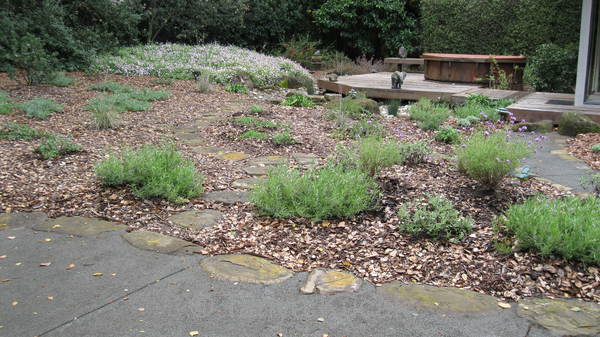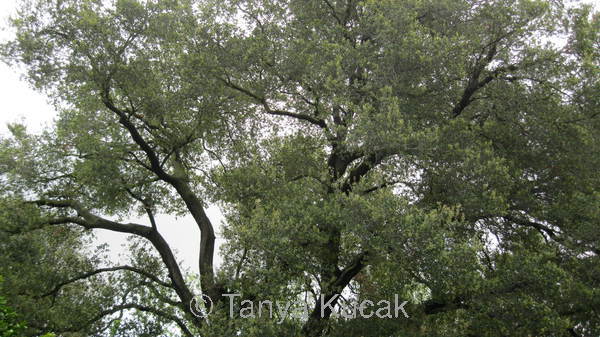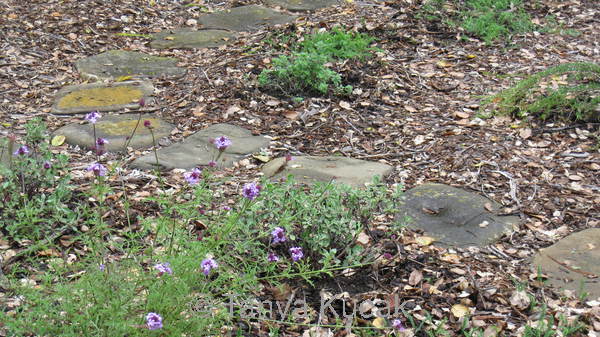
It takes a lot of work to make a low-maintenance garden. Just ask the owners of the Serene Habitat garden in Los Altos, one of the gardens featured on this year's Going Native Garden Tour.
They hired EarthCare Landscaping a couple years ago to get ideas for replacing their backyard lawn with something that would be more sustainable, look good for a long time, and require minimal work. And since they're physically active and have been hands-on ever since they planted their front garden with natives 31 years ago, they decided to contribute some physical labor and save some money to boot.
The new backyard garden, designed by Deva Luna, involved taking apart a washed-flagstone patio and reusing the stones for informal paths and the border of the new patio. It was a labor of love for the owners to dig the stones out from overgrown weeds and groundcover, clean them off, and lay the paths, Luna said. They worked every day for several weeks.
EarthCare placed the remaining stones around the border of the patio, then poured a new patio using pervious concrete. Rainwater flows through this sustainable material and into the ground, keeping it onsite instead of burdening storm drains.
The owners also moved 18 cubic yards of mulch, delivered free from tree trimmers, from the front driveway to the backyard. Sheet mulching is a relatively quick and effective way to transform a lawn into a more sustainable garden. Adding a healthy layer of mulch, at least 3-4 inches, preserves the soil biology, moderates soil temperatures, and discourages weeds.
For irrigation and planting, the owners hired EarthCare to do the work. In planting pockets in the mulch, they planted natives and a few herbs with compost. Natives were a natural choice, echoing the front garden. The owners have enjoyed welcoming wildlife to the garden and appreciate the low maintenance needs of established natives.
No chemical fertilizers or pesticides are used. Located near a creek and on a flyway, the garden hosts many birds, butterflies, and insects. Flowering natives invite them – as well as human visitors – to linger. Many songbirds have nested in the garden, to the delight of the owners, who are avid birders. Lizards, snakes, and small mammals occasionally visit.
One of the challenges over the years was increasing shade in the backyard from one of the most gorgeous oak trees Luna had ever seen. The owners steward the health of their pair of coast live oaks by keeping the fallen oak leaves in place and restricting plantings to at least 10 to 15 feet away from the trunk.
At the edge of the oak canopy, the most successful shade plants are yerba buena, a well-behaved minty groundcover; evergreen currant, with glossy leaves and fragrant stems if you touch them in passing; Yankee Point ceanothus, a dependable cultivar with pale blue flowers and dark green crinkly leaves; and a nonnative sedge.
If you missed the free Going Native Garden Tour this year, be sure to sign up next year, starting in February, at gngt.org.

Note the pervious concrete paths and patio at the bottom and right. The owners placed all the stones for the informal paths. The garden was designed to be low maintenance, leaving enough room for each plant to grow so that “'filler” plants would not have to be removed later.

The majestic coast live oak towers over the creekside edge of the garden.

The owners moved all of the flagstones from the old patio and set them in place for the informal paths. Each flagstone weighed as much as 350 pounds.
© 2012 Tanya Kucak